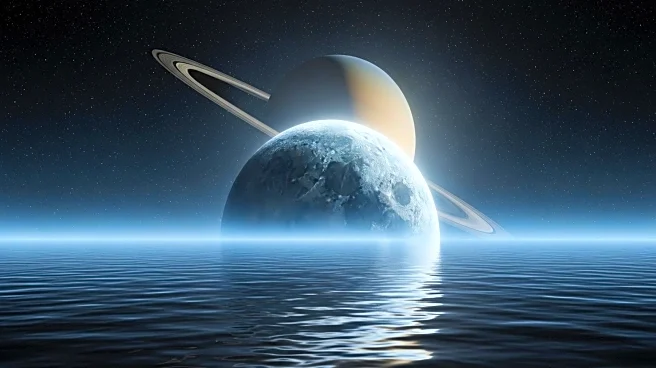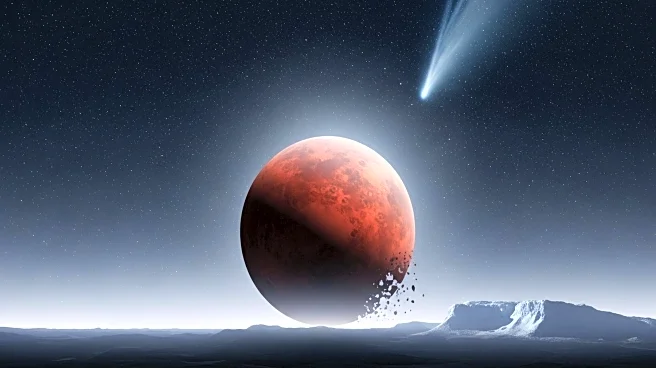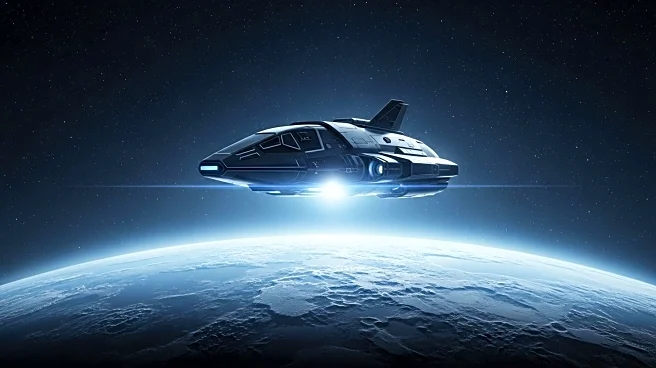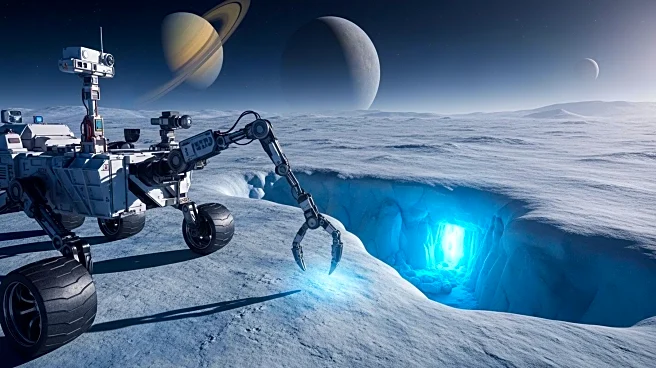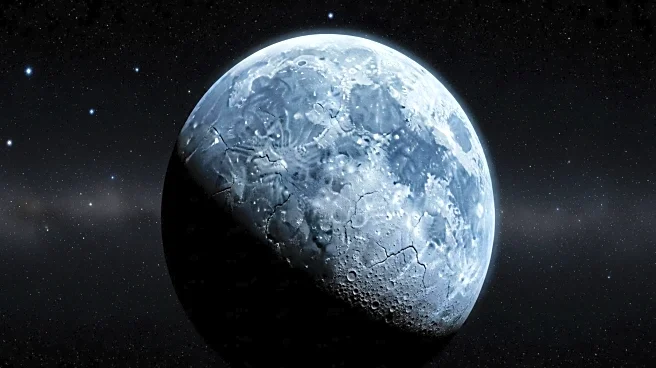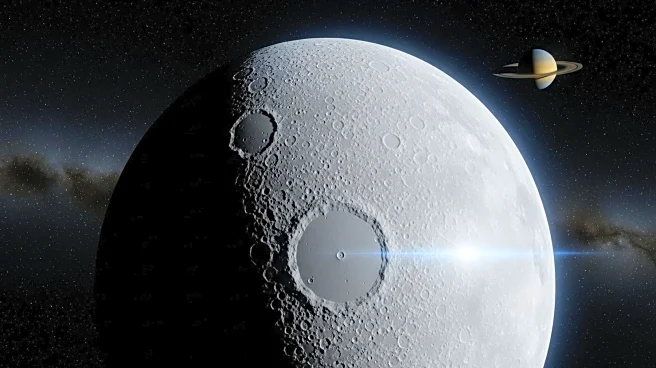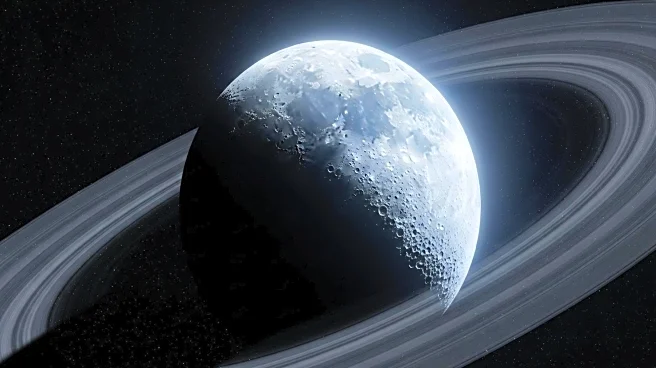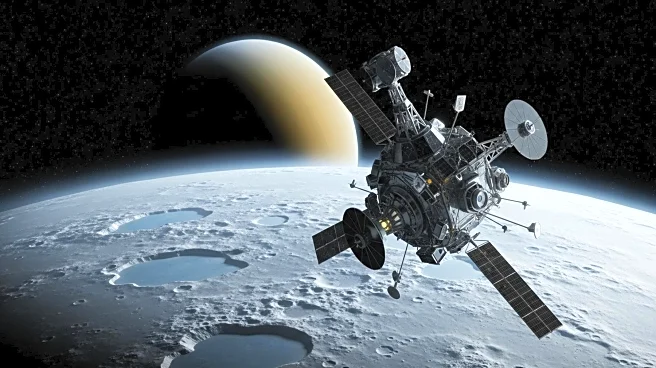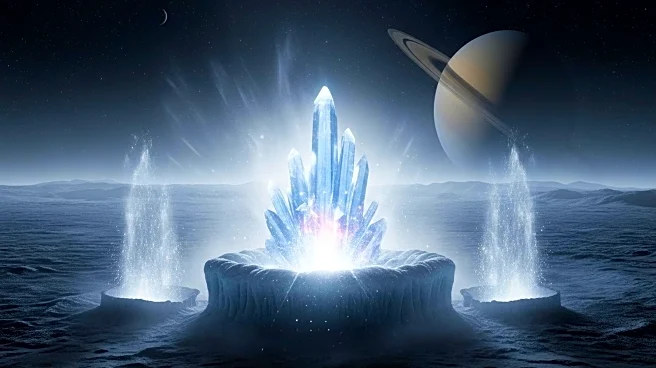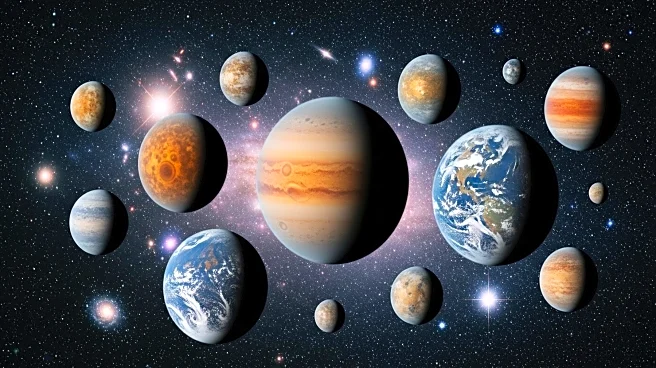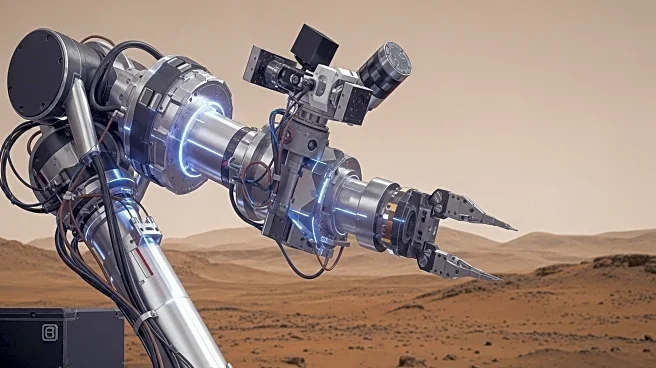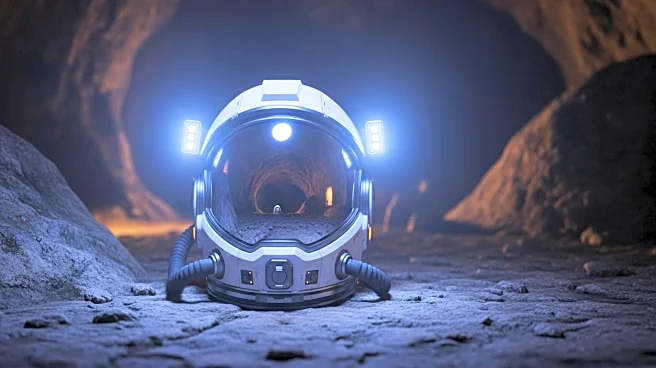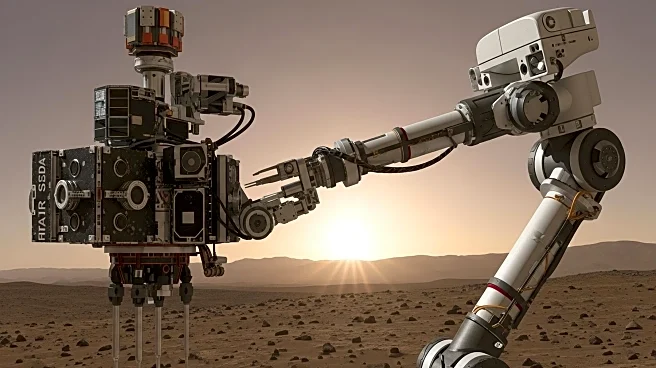What is the story about?
What's Happening?
Recent research presented at the Europlanet Science Congress-Division for Planetary Sciences suggests that Saturn's moon Mimas may harbor a young subsurface ocean beneath its icy surface. Alyssa Rhoden, a planetary scientist at the Southwest Research Institute, highlighted that despite Mimas' heavily cratered appearance, thermal and orbital models indicate the presence of liquid water beneath 12 to 19 miles of ice. This discovery was initially hinted at by data from NASA's Cassini spacecraft, but recent modeling has strengthened the case. The research suggests that changes in Mimas' orbit have generated internal heat through gravitational tides, potentially melting portions of the icy shell within the past 10 to 15 million years. Adeene Denton, Rhoden's colleague, analyzed Mimas' Herschel Crater to further understand the moon's history, suggesting the crater formed as the subsurface began melting.
Why It's Important?
The discovery of a potential ocean on Mimas could redefine the criteria for ocean worlds within our solar system. This finding challenges previous assumptions that Mimas was a frozen solid body and opens up new possibilities for understanding planetary bodies with subsurface oceans. Such discoveries are crucial for astrobiology, as they expand the potential for life beyond Earth. The presence of liquid water is a key factor in the search for extraterrestrial life, and Mimas could become a target for future missions aimed at exploring ocean worlds. This research also contributes to our understanding of planetary formation and the dynamic processes that can occur on seemingly inactive celestial bodies.
What's Next?
Future missions may focus on detecting the hidden ocean on Mimas with advanced orbiters capable of penetrating its icy surface. These missions would aim to gather more detailed data on the moon's internal structure and confirm the presence of liquid water. The findings could prompt further exploration of other moons and planets in the solar system that may harbor subsurface oceans, potentially leading to new discoveries about the conditions necessary for life. Scientists will continue to refine their models and conduct simulations to better understand the gravitational interactions and thermal dynamics affecting Mimas.
Beyond the Headlines
The potential ocean on Mimas raises questions about the ethical implications of exploring and potentially exploiting extraterrestrial bodies. As technology advances, the possibility of mining or colonizing such moons could become a reality, necessitating discussions on the preservation of these environments. Additionally, the discovery highlights the importance of international collaboration in space exploration, as understanding and protecting these celestial bodies require shared knowledge and resources.
AI Generated Content
Do you find this article useful?
